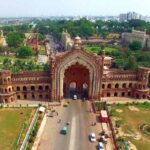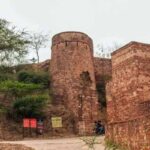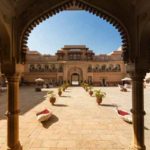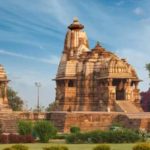Top 10 Places to Visit in Gwalior An significant historical city is the former princely state of Madhya Pradesh, Gwalior. Established by Suraj Sen, a prince of the 18th century Kachhwaha Rajput clan, it was a dream town of many rulers, primarily because of its strategic position. Gwalior is believed to have been named after a ‘Gwalipa‘ saint, who was the one who was able to cure the king’s deadly disease. The city was named Gwalior to honour him. Its majestic palaces, striking temples and splendid monuments are renowned. Gwalior is a very popular tourist destination and a great destination to absorb the rich heritage attractions in India thanks to the glorious history of centuries.
Over the years, today’s Gwalior city has become home to many great dynasties in which every dynasty, through its rulers, artists, musicians, saints, etc has added a new aspect to it, contributing to its attraction. For its magnificence and fabulous architecture, its buildings, sculptures, palaces and other attractions are revered all over the world. Gwalior City is a great concoction of the old and modern world, which is also its main attraction.
Gwalior is also renowned for being the birthplace of the renowned great musician Tansen, one of the nine Darbar Navratnas of the Mughal Emperor Akbar. With great care, the brilliant reminders of a celebrated past have been preserved, which has provided a special and ageless appeal to Gwalior. This city is also a prime pilgrim centre for the followers of Jainism as well as Hinduism, apart from being a prime tourist destination. It is important for a tourist to visit Gwalior for its rich history and glorious monuments during a tour of India Top 10 Places to Visit in Gwalior.
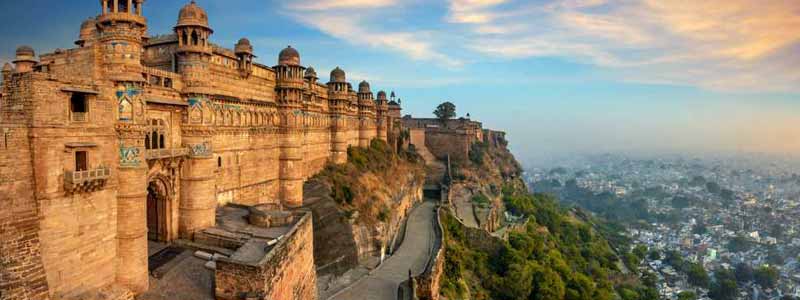
Gwalior Fort : For History Lovers
The Gwalior Fort, an architectural wonder of the 8th century, is situated on a hilltop near the Madhya Pradesh city of Gwalior. The architecture of this magnificent hill top was subject to numerous modifications, adhering to the conquests of different dynasties and rulers. Two main palaces, temples, and water tanks make up the defensive structure of the fort. The most well-known of these are Teli-Ka-Mandir and Man Singh Palace. In the Dravidian style shrine, the former was constructed and its generously sculpted exteriors are highly appreciated. The two pillared Saas-Bahu temples in the fort complex are also very watchful.
Then there’s Man Singh Palace, built in the 15th century by King Man Singh. The renowned palace has an impressive architecture. The Man Singh Palace represents the true colours of the Tomar dynasty, with blue ceramic tiles on the front facade and an impressive structure. The Gwalior Fort complex also houses the Gujari Mahal as a complement to the Man Singh Palace. It was designed for his beloved queen, Mrignayani, by Raja Man Singh. The Karan Palace, the Jahangir Mahal and Shahjahan Mahal are other prominent structures in the majestic Gwalior Fortress.
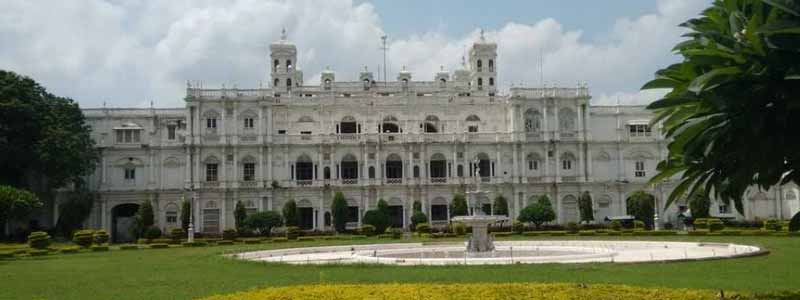
Jai Vilas Palace : For A Sneak Peek Into Royalty
Jai Vilas Palace Museum, one of Gwalior’s most popular tourist attractions, was erected by Maharaja Jayaji Rao Scindia back in the year 1874 and its cost amounted to INR 1 crore. Designed originally as a palace, it has now been converted into a museum. The building, designed by Sir Michael Filose, a prominent architect of the period, is an example of splendid European architecture clubbed with Tuscany on the first floor, The second style is Italian-Doric and the third architectural style is Corinthian. The palace has a large Durbar Hall, spread over an area of 12, 40, 771 square feet, beautifully decorated with superb chandeliers, gold and gold furnishings and a huge carpet. The chandeliers and the gold leaves in the lobby are the heaviest in the world. There’s an immense dining table and a silver train is a highlight. This mini train is a table trolley which rotates itself on the table in front of diners so that they can pick up food.
The Jai Vilas Palace Museum collection includes the world’s largest pair of chandeliers, silver carriage, Raja Ravi Verma’s oil painting, Malabar furniture, Malabar furniture, crystal furniture, palki (Palanquin), pooja ghar, Jacobean furniture, Napolean table, miniature paintings, lithograph, ancient royal picture, silver train, Chinese pot, royalty clothes and shoes, Jain sculpture.
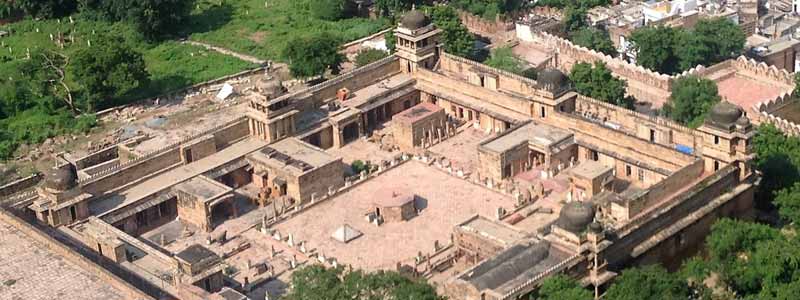
Gujari Mahal Archaeological Museum : To Know The History
Gwalior, one of the country’s historically significant destinations, has beautiful monuments and one of them is Gujari Mahal, Gwalior. It is located within the Fort of Gwalior. The fort is located on a 2.8 km long sandstone precipice, 200-850 km wide and 91 m above the plains. Six Mahals, several water tanks and three temples enclose the Gwalior fort. The fort has seen many ups and downs, and from one monarch to another has changed hands. It passed to the Mughals, then the Marathas, the British, and finally the Scindhis, initially governed by the Tomars. The fort is approached by two main entrances, one from the North East and the other from the South West.
Gujari Mahal Gwalior, regarded as one of the finest monuments and museums in Gwalior, is an obvious tourist destination.
In the 15th century, Gujari Mahal, Gwalior, was designed by Raja Mansingh for his favourite queen, Mrignayani. It has experienced harsh weather and has passed the time test. The storey goes that she requested a separate palace for her with constant water supply from the River Ria after the king succeeded in winning over Mrignayani, and hence, Gujari Mahal in Gwalior in India.
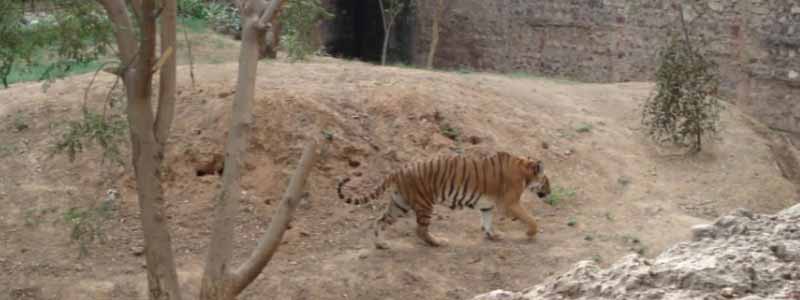
Gwalior Zoo : To Interact With Wildlife
The Gwalior zoo, which has a good range of animals, including a white tiger, can be visited by families and wildlife enthusiasts. There are gurudwara, a mosque, a theosophical lodge and a prayer hall on the nearby Phool Bagh campus.
The Gwalior Zoo is spread over an area of 8 hectares and is home to several unusual animal species, including a white tiger. Deer, monkeys, Royal Bengal Tiger, serpents, crocodile, spotted deer, sambhar, hyena, lion, rabbits, panther, bear, hippopotamus, etc are the primary animals present in the zoo. Some unusual and colourful birds, snakes, lizards, etc are also found in the zoo. The zoo can be visited by family and wildlife lovers and spend their quality time with the animals.
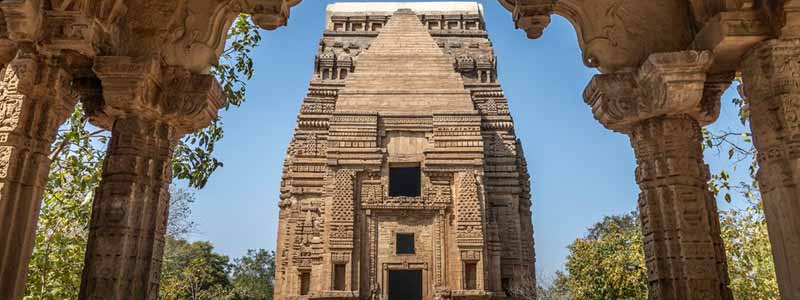
Teli Ka Mandir : Seek Blessings
Gwalior is one of the country’s important destinations and is packed with beautiful places. Gwalior is one of the favourite destinations in the city of Gwalior, Teli Ka Mandir. It is the tallest temple in the Gwalior Fort and the most impressive. It is an amalgamation of architectural styles from the north and south. Located in the town of Gwalior, Teli Ka Mandir, Gwalior has a special place on the country’s tourism map.
An illustrious fort called the ‘pearl in the necklace of the castles of Hind’ is housed in Gwalior district, within the precincts of which the Teli Ka Mandir, Gwalior is situated. The place was an ancient seat of Jain worship and one of the Hindu period’s finest fortresses.
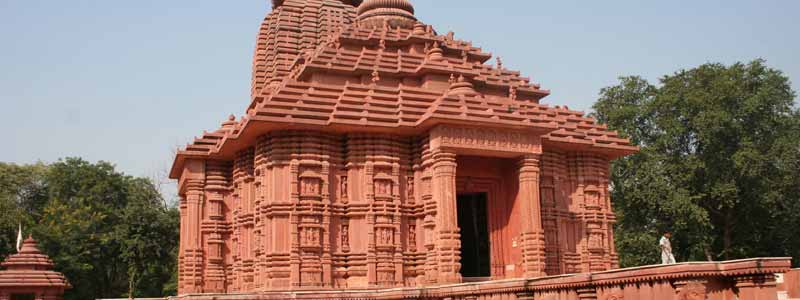
Sun Temple : One Of The Most Famous Temples
Surya Mandir, Gwalior is one of the main attractions in the historic city of Gwalior. Surya Mandir in Gwalior, India is thronged every year by numerous pilgrims and frequent visitors, well revered among the Holy Places in Gwalior. Surya Mandir, Gwalior, provides an online travel guide. The city has its own beauty, with some of the best tourist spots, such as Gwalior Fort, Man Mandir Palace, Sas Bahu Ka Mandir and Teli Ka Mandir.
In 1988, G.D Birla, the famous Indian industrialist, founded the Surya Mandir, Gwalior, or the Sun Temple. The famous Sun Temple at Konark in Orissa is inspired by it. Dating back to the 8th century, the city of Gwalior has seen some of the greatest Rajput clans, such as the Prathiharas, the Kachwahs and the Tomars. Stories go around that the Kachwaha dynasty’s Maharaja Suraj Sen had a deadly disease and was healed by the hermit-saint Gwalipa. Suraj Sen founded the city of Gwalior out of gratitude to him.
One of the latest entrants to the list of places of interest in Gwalior is Surya Mandir, Madhya Pradesh. The temple is one of the architectural wonders and has in the temple premises a magnificent sculpture of Lord Surya. Surya Temple, Gwalior has captivating exteriors made of red sand stone. The interior of the temple has white marble and this adds to this wonderful creation’s exotic beauty.
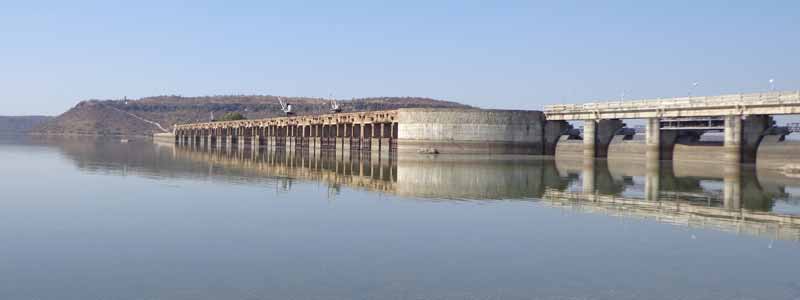
Tighra Dam : For Adventure
A fresh water reservoir situated at Tighra near Gwalior in Madhya Pradesh is the Tighra Dam or Tigra Dam. It is the city of Gwalior’s primary source of drinking water and also one of the famous picnic places near Gwalior to visit.
Tighra Dam was built on the Sank River in 1916 and is a major source of water for Gwalior city. In the vicinity of eleven villages, this dam was built. For irrigation, drinking and domestic purposes, the villagers rely on this dam. The dam is a masterpiece of engineering and is 24 metres high and 1341 m long at its crest. There is a capacity of 4.8 million cubic metres in the reservoir. Due to infiltration in 1917 and 1970, respectively, the dam collapsed twice. It has emerged today, however as a favourite place for families to spend some good time together.
The tourist department started a boating club here when tourism gained popularity. At Tighra Dam, you can enjoy speed boating, jalpari boating, paddle boating and water scooter trips. It also provides serenity with the picturesque view that surrounds the dam, apart from adventure. The area became a good habitat for many birds after the building of the dam and this area was later designated as a Bird Sanctuary. The reservoir is home to many crocodiles, and during boating, many different fishes can be seen.
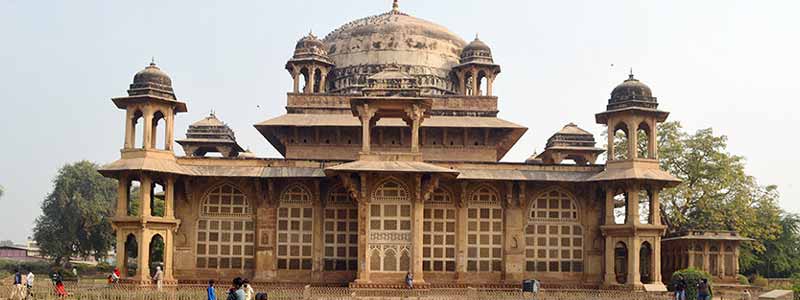
Tomb Of Tansen : For A Glimpse Of History
The tombs of Mohammed Ghaus & Tansen are located in the Madhya Pradesh town of Gwalior. Well known for its architecture, one of the popular sightseeing attractions in Gwalior is the tomb complex.
During Akbar’s reign, the Tomb of Mohammad Ghaus was constructed in the 16th century AD. Ghaus Mohammed was an Afghan prince who became a Sufi saint later on. Mohammad Ghaus supported Babur when he was defeated in 1526 CE by the fort of Gwalior, according to legend. In the history of Mughal India, the Sufi saint belonging to the 16th century occupies an important role and is said to have had considerable control over Mughal emperors such as Babur and Humayun.
A famous pilgrimage centre for both Muslims and Hindus is the Tomb of Ghaus Mohammed. Typical Mughal architecture with hexagonal pillars standing at each of its four corners is the structure of this tomb. The house, decorated with blue ceramic tiles, is square in plan and topped by a square dome. At its corners, it has hexagonal domed kiosks along with sloping eaves that project from the outside. Intricate carvings and latticework appear on the tomb walls.
In the vicinity of the Tomb of Muhammad Ghaus is the Tansen Memorial, also known as the Tomb of Tansen. Tansen was a well-known musician and one of the nine jewels of the court of Akbar. In the North Indian tradition of classical Hindustani music, he is among the most prominent personalities. Tansen is remembered for his epic compositions of Dhrupad, the development of many new ragas, and the writing of two classical music books, Sri Ganesh Stotra and Sangita Sara. He was buried next to his guru and a beautiful piece of architecture is this burial spot.
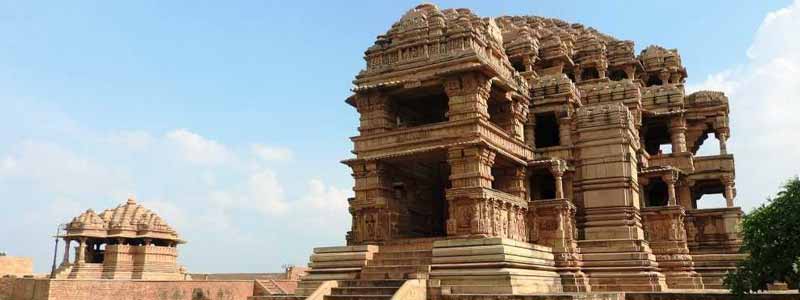
Saas Bahu Temple : A Vishnu Temple
In Gwalior, Sasbahu temple is a fusion of two neighbouring temples. They are situated near the eastern wall of the fort of Gwalior. The largest temple was built by King Mahipala in the 11th century. Lord Vishnu is the principal deity of this temple. The Lord is referred to as Sahastrabahu, which implies that one has many hands. Sahastrabahu’s name was eventually changed to Sas Bahu. The smaller temple was designed later on the artistic lines of the first one. For its architectural elegance, Sasbahu temple is noted. You get a glimpse of Lord Brahma, Lord Vishnu, and Lord Shiva from the doorway. Brahma is the creator, Vishnu is the preserver and Shiva is the destroyer, according to Hindu mythology. The most impressive feature of this temple is that it features a three-story stone carved structure that is erected without arches. The intricately carved pillars provide the building with support. The elegant stairwell adds to this temple’s beauty Top 10 Places to Visit in Gwalior.
On the platform, the temple is elevated and has a two-story vestibule that provides access to the three-story chamber. You will not be able to keep your eyes off the intricate works of stone in this temple’s body and pillars. The elegant figures scripted on the wall express the architectural abilities of sculptors of the 11th century. It is a wonderful place to offer your worship as well. The tiny temple of Gwalior’s Sasbahu temple looks more elegant than the bigger one, Yet it doesn’t have the sheer grandeur of a bigger temple.
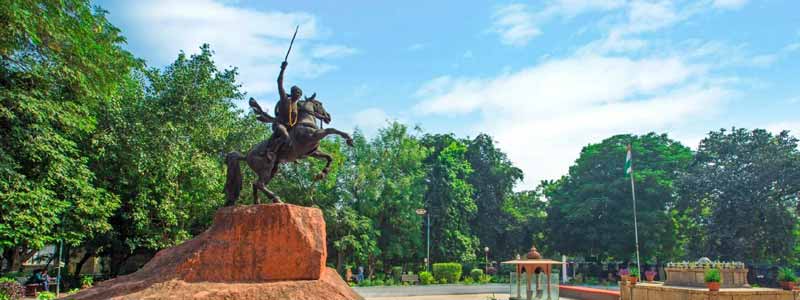
Samadhi Of Rani Laxmi Bai : For The Love Of History
Maharani Lakshmi Bai Park is a memorial located in the Phool Bagh region of Gwalior, Madhya Pradesh, at a distance of 1.5 km from the Gwalior junction and 3 km from Gwalior Fort. Rani Lakshmi Bai’s Samadhi is situated here and is one of the Top 10 Places to Visit in Gwalior.
Lakshmi Bai, the Rani of Jhansi, was born in Banaras on November 19, 1835 CE, and died in Gwalior on June 18, 1858 CE. She is a well-known freedom fighter who fought for the freedom of the princely state, Jhansi, against the British. She was one of the leading figures of the 1857 Indian Revolt, becoming a symbol of resistance to the British Raj for Indian nationalists.
An eight-metal tall statue of Rani Lakshmi Bai was installed by the ruler of Gwalior in 1920 AD to pay homage and reverence to the Rani. It shows her riding a horse with a sword in her hand and a boy behind her. Every year, in her honour and memory, a fair is organised in Gwalior on June 18.



